(Program launched in July: PR-Path for illegals)
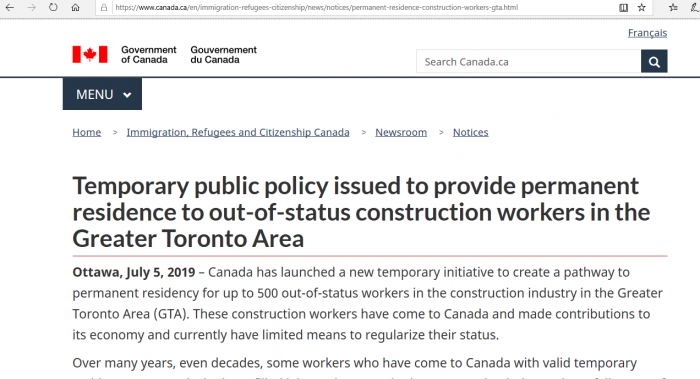
(Canadian Labour Congress)

(Canadian Border Services cancelling arrest warrants)
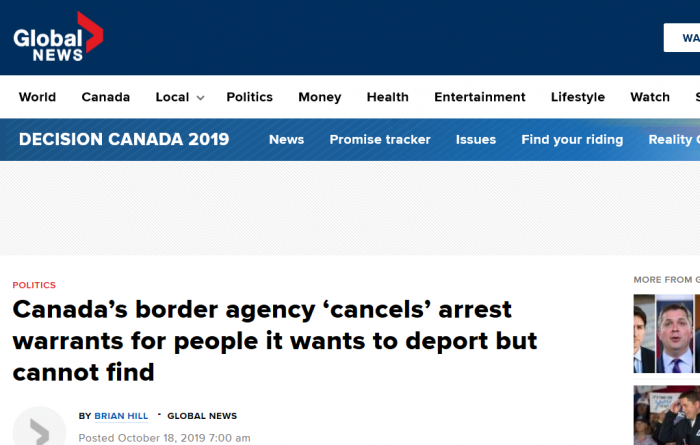
(Nothing new here. Temps becoming permanent residents is old news, and there are many ways to do this.
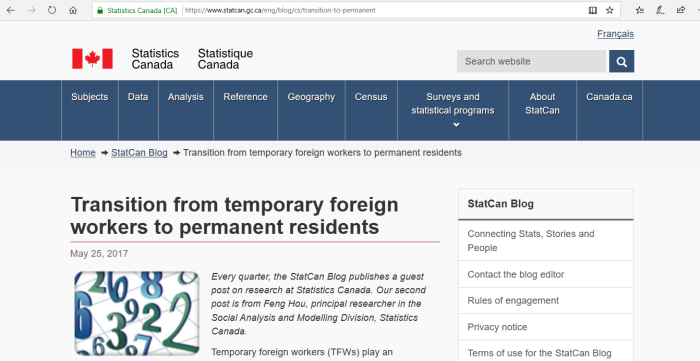
(Screenshots from 2018 Report to Parliament)

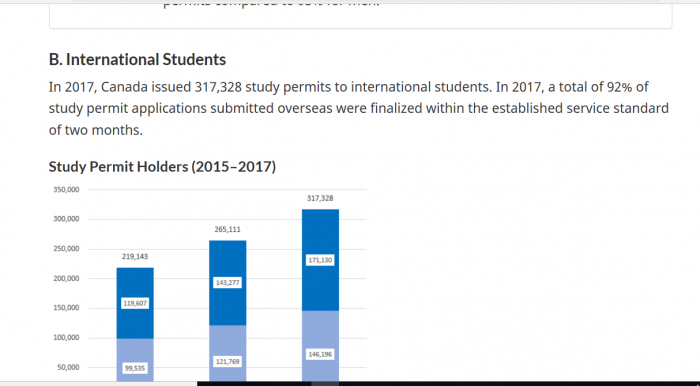
(How the CPC might address this issue)
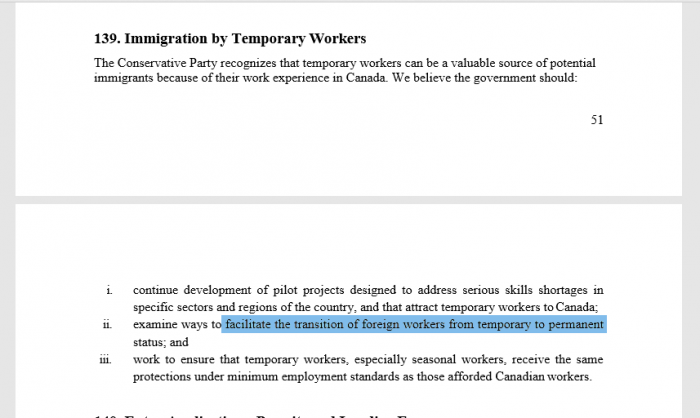
1. Mass LEGAL Immigration In Canada
Despite what many think, LEGAL immigration into Canada is actually a much larger threat than illegal aliens, given the true scale of the replacement that is happening. What was founded as a European (British) colony is becoming unrecognizable due to forced demographic changes. There are also social, economic, environmental and voting changes to consider. See this Canadian series, and the UN programs for more detail. Politicians, the media, and so-called “experts” have no interest in coming clean on this.
CLICK HERE, for UN Genocide Prevention/Punishment Convention.
CLICK HERE, for Barcelona Declaration & Kalergi Plan.
CLICK HERE, for UN Kalergi Plan (population replacement).
CLICK HERE, for UN replacement efforts since 1974.
CLICK HERE, for tracing steps of UN replacement agenda.
Note: If there are errors in calculating the totals, please speak up. Information is of no use to the public if it isn’t accurate.
2. Important Links
(1) https://www.canada.ca/en/immigration-refugees-citizenship/news/notices/permanent-residence-construction-workers-gta.html
(2) http://archive.is/e6OYZ
(3) https://canadianlabour.ca/permanentresidence/
(4) http://archive.is/s3pq6
(5) https://canucklaw.ca/sanctuary-cities-an-end-run-around-having-borders/
(6) https://canucklaw.ca/true-scale-of-illegals-in-us-22-million-more-amnesty-coming/
3. Annual Immigration Reports To Parliament
(a) 2004 Annual Report to Parliament
(b) 2005 Annual Report to Parliament
(c) 2006 Annual Report to Parliament
(d) 2007 Annual Report to Parliament
(e) 2008 Annual Report to Parliament
(f) 2009 Annual Report to Parliament
(g) 2010 Annual Report to Parliament
(h) 2011 Annual Report to Parliament
(i) 2012 Annual Report to Parliament
(j) 2013 Annual Report to Parliament
(k) 2014 Annual Report to Parliament
(l) 2015 Annual Report to Parliament
(m) 2016 Annual Report to Parliament
(n) 2017 Annual Report to Parliament
(o) 2018 Annual Report to Parliament
(p) Archived listings of Reports
Each annual report talks about how many “temporary” workers and students come into Canada every year. But how many of them actually leave, and how many simply stay, legally or otherwise?
4. Some Context For This Review
Defenders of mass migration into Canada always defend so-called “temporary” entry into the country. These programs include:
(a) Temporary Foreign Worker Program
(b) International Mobility Program
(c) Student Visas
The main difference (on paper) between TFWP and IMP is that TFWP requires a Labour Market Impact Assessment (LMIA), which is a demonstration that a job exists that a Canadian cannot fulfill. By contrast, the International Mobility Program is effectively an open work permit.
While student visas are supposed to be for school, students are allowed to work up to 20 hours per week when class is in session. They are allowed unlimited hours other periods. Student visas are essentially work permits as well.
Despite what critics claim, not everyone returns home after their allotted time in Canada. Some do, certainly, but a lot don’t. Why? Because Canada’s laws make it very easy to obtain permanent residence, or to otherwise extend your stay. And not only can the main applicant stay, but family (typically spouse and children) are often included in this.
Certainly there are other programs than the 3 listed above, but they are 3 of the largest, and important to note.
5. Pathway To Permanent Residence
Ottawa, July 5, 2019 – Canada has launched a new temporary initiative to create a pathway to permanent residency for up to 500 out-of-status workers in the construction industry in the Greater Toronto Area (GTA). These construction workers have come to Canada and made contributions to its economy and currently have limited means to regularize their status.
And if this “temporary” initiative is deemed to be successful, then how much will it be extended by? Guaranteed it is not 500 people.
Over many years, even decades, some workers who have come to Canada with valid temporary resident status, and who have filled labour shortages in the construction industry, have fallen out of status. Previous changes, such as “four in, four out”, have resulted in some workers losing their status. These workers have continued to address significant labour shortages in the construction industry, while also contributing to the economy and their communities. Without valid immigration status, these workers and their families have lived in fear and been left feeling very vulnerable. The presence of out-of-status workers in a significant industry leads to depressed wages for Canadians and makes workers vulnerable to employer exploitation and abuse.
Over many years and decades? So the government admits that people have been overstaying visas or work permits for decades. Why hasn’t this been addressed long ago.
Illegals living in Canada leads to depressed wages? I would actually agree, but up to a point. Yes, the extra labour available does drive down wages. However, that would still be the case even if they were “legalized”. It would still be an abundance of cheap labour.
The Temporary Public Policy for Out-of-Status Construction Workers in the Greater Toronto Area responds to the recent parliamentary report on labour shortages in the construction industry in this part of Canada and reflects observations from numerous studies about the vulnerability of out-of-status workers. In the committee’s recommendations, the Government was urged to explore solutions for workers in the construction industry with precarious or no immigration status.
This temporary initiative is a step forward to increase the protection of some of these construction workers and their families, while safeguarding Canada’s labour market and ensuring that Canada can retain the workers it needs to grow the economy and build communities.
Potential applicants will first identify themselves to the Canadian Labour Congress (CLC), a national labour organization with many construction industry affiliates in the GTA. CLC officials will determine the eligibility of potential applicants and refer them to Immigration, Refugees and Citizenship Canada.
Source is here. That is exactly as it sounds. People living in the country illegally can sign up for this program, and if accepted, will be on a pathway to permanent residence.
Not that we don’t have large numbers of Canadians who are either unemployed or underemployed. Never mind that Canadians are forced to compete for jobs with people in the country illegally, who are often willing to work less. Never mind the effect of driving down wages.
Ignore the money that gets sent out of the country as remittances, money that should be staying and helping to drive Canada’s economy.
Does anyone truly believe this is a “temporary” program, or that it is going to remain at just a few hundred people? No, once it’s considered “operational”, the next step will be to scale it up.
6. PR Program For Families
Spouses/partners and dependent children can be included in the application for permanent residence.
This detail cannot be left out. This so-called temporary initiative is not just for the worker without legal status. Spouse and children are also eligible to apply under it.
7. Canadian Labour Congress
The Canadian Labour Congress (CLC) is proud to be working with Immigration, Refugees and Citizenship Canada (IRCC) to implement a temporary initiative that will help 500 out-of-status construction workers find a pathway to permanent residence that will end the insecure nature of their employment and immigration status.
Out-of-status workers are people who have come to Canada with valid temporary residence status, but have fallen out of status for various reasons, and have found employment in the construction industry. Without status, these workers have continued to fill labour shortages, while contributing greatly to our society and economy. However, fear of detection, detainment, and deportation drives these workers and their families “underground,” often limiting their access to social programs, and making them vulnerable to employer exploitation and abuse.
The Canadian Labour Congress openly admits that people are working without being legally allowed in (or to remain) in Canada. But who cares, we need the workers.
The purpose of this initiative is to put in place a mechanism for the Government of Canada and the CLC, in the spirit of co-operation and mutual interest, to work together in the identification and referral for processing of applications for permanent residence in Canada of up to 500 out-of-status construction workers in the Greater Toronto Area (GTA) and their immediate family members (e.g., spouse or common-law partner, and dependent children).
Up to 100 of the 500 spaces for this public policy will be permitted for those who entered Canada as a temporary resident, but who never had authorization to work in Canada.
For some clarification, it is not 500 people INCLUDING family members. Rather, it is 500 people plus their family members.
Nice bait-and-switch here. The program is announced as a means to help WORKERS who have fallen on hard times. However, the CLC admits it will be partially open for people who were never even workers.
Also, this may be poor wording, but is immediate family limited to a spouse and children, or are those just the guidelines?
8. U.S. A Cautionary Warning
Both sanctuary cities and the estimated 22 million or more illegals have been covered here. The U.S. has had many amnesty initiatives, but since the borders are not secure, this doesn’t help the problem. It only encourages much more of it.
Problem is, since Canada doesn’t track people leaving the country (until very recently), we have no way of knowing who has left, and when.
Informal estimates are of 200,000 to 500,000 people living in the Canada, small compared to 22M or more in the United States. However, getting actual substance behind those estimates is difficult. And if this “pilot program” is considered successful, how large will it be expanded to?
9. CBSA “Cancelling” Arrest Warrants
While a separate topic, this is interesting to consider as well. Recently the Canadian Border Services Agency admitted it “cancels” arrest warrants for people it is supposed to deport, but cannot find. The article is mind-blowingly stupid beyond belief.
According to Lemire, the CBSA cancelled more than 1,300 immigration warrants in 2018. It’s unclear how many of these cancelled warrants were for people who could still be in Canada but were not found by the CBSA.
A cynic might wonder whether this is politically motivated, or whether the Border Services wants to appear less incompetent by having less “open warrants” on its books. Either way, it’s disgraceful, and undermines Canadian sovereignty.
10. Forget Deportation, Just Put Them To Work
That seems to be where we are heading. No more “divisive” deportations. Just put them to work, and hand out their new papers. Don’t worry about any of the long term costs.
As has been covered ad nauseum here, LEGAL immigration into Canada is currently at about 1 million per year. That includes people who have entered on some kind of visa, and have a pathway to permanent residence.
This program will not stop at 500 workers and their families. It will be expanded once the structure is in place. It cheapens Canadian citizenship when access to it is so easy.
